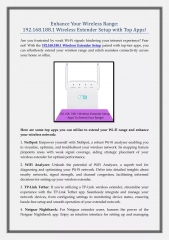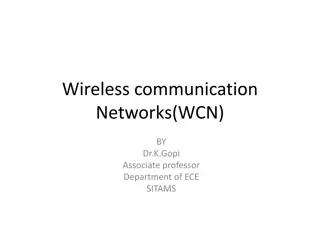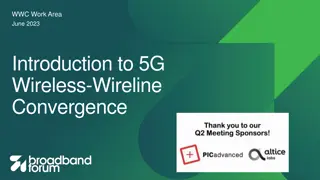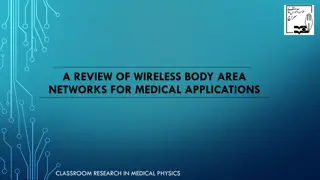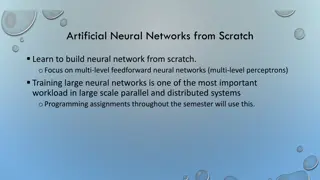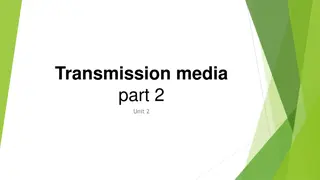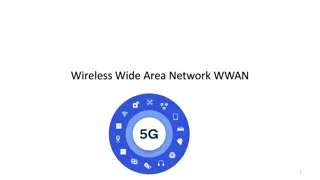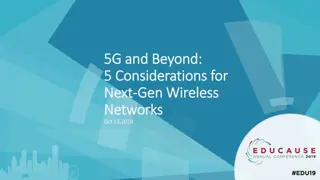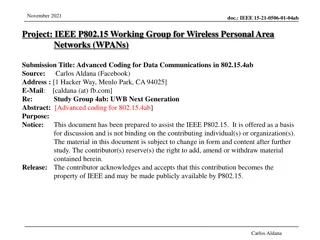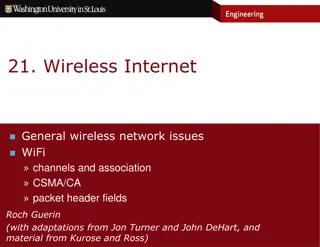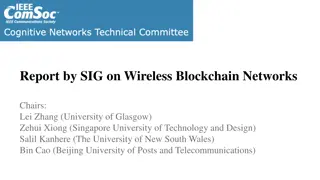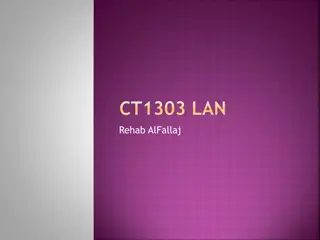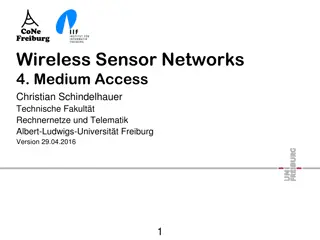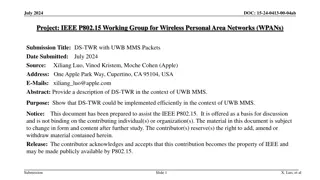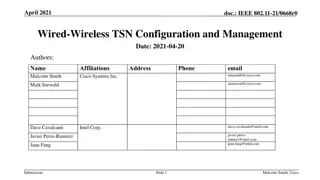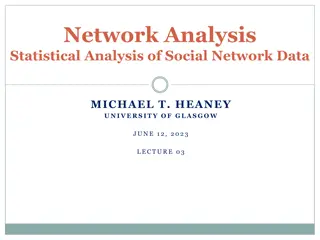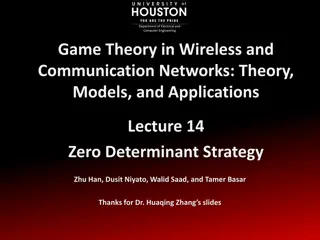Advanced Strategies for Wireless Communication Networks
Explore advanced strategies for wireless communication networks, including aggressive synchronous transmissions with in-network processing, goals beyond capture-based processing, concurrent wireless transmissions, and innovative concepts for efficient data transfer and network reliability. Dive deep into example scenarios to understand practical implementations and challenges in next-generation wireless networks.
Download Presentation

Please find below an Image/Link to download the presentation.
The content on the website is provided AS IS for your information and personal use only. It may not be sold, licensed, or shared on other websites without obtaining consent from the author.If you encounter any issues during the download, it is possible that the publisher has removed the file from their server.
You are allowed to download the files provided on this website for personal or commercial use, subject to the condition that they are used lawfully. All files are the property of their respective owners.
The content on the website is provided AS IS for your information and personal use only. It may not be sold, licensed, or shared on other websites without obtaining consent from the author.
E N D
Presentation Transcript
Aggressive Synchronous Transmissions with In-network Processing Beshr Al Nahas Olaf Landsiedel
Goals Try a strategy other than Glossy Capture-based in-network processing Top 3 solutions in 2017, and top 2 this year Low-power wireless communication Flexible: self-forming networks without planning Fault Tolerant: cope with node and link failures Agnostic to communication patterns: One-to-one, one-to-many, many-to-one, many-to-many
Concurrent Wireless Transmissions (of different data) A B C Receive stronger signal of concurrent transmissions Preambles overlap: 802.15.4 @2.4GHz: 5 bytes = 160 s Threshold: roughly 3dB Known as: Capture Effect
Concept Nodes transmit concurrently Capture effect: rx with high probability On receive Process & merge local & received data Transmit if new Feedback: assists convergence All: progress flags to support flow Sinks: ACK flags to ensure delivery Aggressive: retransmit until all sinks acknowledge reception All-to-all communication S1 F D S1 S2 Sources Relay S2 F D Destination
Example Scenario Network: four nodes Two sources S1, S2 Forwarder F Destination D Packet: Four progress bits: one for each node Two ACK bits: A1, A2 one for each source Set by the destination S1 F D S2 Progress F Ack S1 D S2 A1 A2
Example Scenario S1 F D TX Success TX Failure X Flag set - Flag not set X Flag changed S2 Progress Ack S1 F D S2A1A2 X - - - - - Progress Ack S1 F D S2A1A2 X - - - - - Progress Ack S1 F D S2A1A2 X X - - - - Progress S1 F D S2 X X - - S1 Node merges flags F X X X - - - - X X - - - - X X X - Destination ack S1 D X X X X X - X - X X X - X X X X - X - - X X - X S2 Slot 1 Slot 2 Slot 3 Slot 4
Example Scenario S1 F D TX Success TX Failure X Flag set - Flag not set X Flag changed S2 Ack A1A2 - - Progress Ack S1 F D S2A1A2 X X - - - - Progress Ack S1 F D S2A1A2 X X - - - - Progress Ack S1 F D S2A1A2 X X X X X - Progress S1 F D S2 X X X X S1 F - - X X X - X - X X X - X - X X X X X - X X X X X X X - X - Progress flags only: Risk missing data D X - X X X - X - X X X - X - X X X X - - X X - X - - X X X X X - X X X X X - X X X X S2 Slot 3 Slot 4 Slot 5 Slot 6 Slot 7
Reflections: Capture-based vs. Glossy Glossy-based solutions outperform Short slots (0.7 ms) Rx-tx-tx-tx policy more retransmissions Constructive interference Top 3 solutions in 2017, and top 2 this year
Reflections: Capture-based vs. Glossy Capture-based solution penalizes weak links Longer slots to fit flags & processing (2.6 ms) less retransmissions RX iff RSSI > noise-sum + 3dB High interference weak / border-line links Multiple senders with different data add to noise break weak links Unlike constructive interference
Progress S1 F Ack S1 F D S2 A1 A2 D S2 Beshr Al Nahas Olaf Landsiedel
Low level details Pre. Proc. MCU VHT TX Transmit Radio Listen Valid Pre. Process RX Receive Radio e.g., no SFD RX fail Listen Pre. Proc. MCU Radio Slot Save power: fine-grain duty-cycling Channel 1 Channel 2 Nodes Combat interference: hop channel Slots [1] A2: Network-wide Consensus Utilizing the Capture Effect in Low-power Wireless Networks, Beshr Al Nahas, et al, In SenSys 17.


